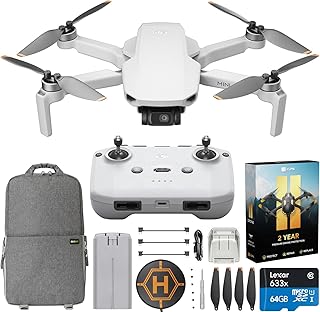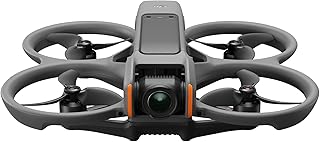Getting Started with Drone Racing using a DJI Drone:
While DJI drones are primarily known for their aerial photography and videography, they can also be used for drone racing, albeit with some limitations.
Here's a breakdown of how to get started:
1. Choosing the Right Drone:
* DJI Mini Series (Mini 2, Mini 3 Pro): Great for beginners due to their affordability, portability, and ease of use. However, they lack the power and maneuverability of dedicated racing drones.
* DJI Mavic Series (Mavic Air 2, Mavic 3): Offer better performance than the Mini series, but still fall short of dedicated racing drones in terms of agility and speed.
* DJI FPV Combo: Designed specifically for drone racing and features high-performance motors, a dedicated FPV system, and a powerful controller. This is the best option for serious drone racing.
2. Understanding the Basics:
* FPV (First Person View): Drone racing is all about experiencing the flight from the drone's perspective using FPV goggles.
* Drone Control: You'll need to learn how to control the drone's pitch, roll, yaw, and throttle effectively.
* Flight Modes: Most DJI drones offer different flight modes, including Sport Mode, which allows for faster speeds and more aggressive maneuvers.
3. Setting Up the Drone for Racing:
* FPV Setup: If you're using a DJI Mini or Mavic, you'll need to install a third-party FPV system, such as a Fatshark or Eachine headset with a transmitter.
* Propeller Guards: Consider removing propeller guards for better airflow and performance, but be cautious as this increases the risk of crashes.
* Battery: Use high-capacity batteries for longer flight times and higher performance.
4. Practicing and Learning:
* Simulators: Use drone racing simulators like Liftoff, Velocidrone, or Drone Sim to practice your flying skills in a safe environment.
* Open Space: Find an open space like a park or field with plenty of room to practice flying and maneuvering.
* Join a Local Drone Racing Community: Connect with other drone racers to learn from their experience and participate in local races.
5. Safety First:
* Always Fly Responsibly: Follow local regulations and guidelines for drone flying.
* Keep a Safe Distance: Fly your drone in an open area with no obstacles or people nearby.
* Be Mindful of Your Surroundings: Always be aware of your surroundings and any potential hazards.
Challenges of Racing with a DJI Drone:
* Limited Agility: DJI drones are not as agile as dedicated racing drones, which can make it difficult to navigate tight courses.
* FPV Setup: Adding an external FPV system to a DJI drone can be a complex process, especially for beginners.
* Battery Life: DJI drones have limited battery life compared to dedicated racing drones, limiting the duration of races.
Overall: While DJI drones can be used for drone racing, it's not their primary purpose, and dedicated racing drones offer better performance and features.
If you're serious about drone racing, consider investing in a DJI FPV Combo or a dedicated racing drone. However, if you're just getting started and want to try out drone racing with your existing DJI drone, the above steps will help you get started safely and enjoyably.


